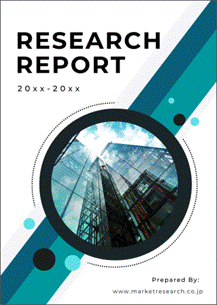 | • レポートコード:MRC2106A272 • 出版社/出版日:Mordor Intelligence / 2021年5月25日 • レポート形態:英文、PDF、150ページ • 納品方法:Eメール(受注後2-3営業日) • 産業分類:建設 |
| Single User | ¥481,000 (USD3,250) | ▷ お問い合わせ |
| Team User | ¥555,000 (USD3,750) | ▷ お問い合わせ |
| Corporate License | ¥962,000 (USD6,500) | ▷ お問い合わせ |
• お支払方法:銀行振込(納品後、ご請求書送付)
レポート概要
| 本調査資料は、インドネシアの建設市場について調査し、イントロダクション、調査手法、エグゼクティブサマリー、市場洞察、市場動向、分野別分析、建設タイプ別分析、競争状況、投資分析、主要インフラ開発プロジェクト、市場の将来などを徹底分析したものです。 |
In 2019, there were approximately 169 thousand construction establishments active in Indonesia. Indonesia’s construction industry was experiencing increased growth due to increases in infrastructure construction.
In 2020, however, Large-Scale Social Restrictions (PSBB) imposed by the government to contain the spread of Covid-19 and the global travel restrictions have affected the availability of manpower and raw materials, thereby weighing on the Indonesian construction industry’s growth in the first half of 2020.
The industry has been impacted by the delays in project implementation and the re-allocation of part of the government’s budget towards its fight against Covid-19. The government re-allocated 20.4% of its 2020 budget – USD 1.7 billion – to Covid-19 relief measures.
Indonesia is known as the second most productive and profitable construction market in Asia, where a huge number of construction projects are undergoing in both residential as well as non-residential sectors. Due to the huge demand for residential properties and the growth of the property sector in major cities around the country. The public works investment is a key point in the government’s plan to provide water resources, roads, and human settlement infrastructure for long-term development.
Indonesia’s receptive stance towards China’s Belt and Road Initiative (BRI) will be a boon to its construction industry over the next decade and help sustain the current rapid pace of development. private and foreign capital is crucial in bridging the country’s widening infrastructure gap.
Key Market Trends
Govt’s Ambitious Infrastructural Development Plans
The industry’s growth is expected to be supported by the government’s focus on infrastructure development to revive the country’s economy.
In late September 2020, the Indonesian Parliament approved the USD 185.3 billion draft budget for 2021. Of the total, it allocated USD 29 billion towards infrastructure development, which will mainly focus on reviving the economy, providing basic services, and improving connectivity.
The government had a plan to begin infrastructure work related to the USD 33 billion capital city relocation project in 2021, but in September 2020, the National Development Planning Agency (Bappenas) announced that the project has been formally put on hold due to the economic impact of the pandemic. Although construction has been suspended, the government will continue to move ahead with its planning, with infrastructure work expected to commence in 2022 or 2023.
The Indonesian construction industry is expected to stabilize and record growth between 2021-2024, supported by infrastructure investments under the National Medium-Term Development Plan. The plan is to invest IDR6 quadrillion (USD 412 billion) on the development of transport, industrial, energy and housing infrastructure projects over the next four years.
Although construction activity in recent years has been concentrated in Jakarta and the surrounding provinces of Banten and West Java, the Jokowi administration is aiming to decentralize business activity away from Java.
Millennials will drive demand for Indonesia’s Residential Construction Sector
According to Indonesia’s Central Bureau of Statistics (BPS), about 50% of the total population in 2019 was at working age of between 20 and 54 years old, of which 84 million were millennials with significant purchasing power. Millennials represent a large proportion of the overall consumer market, and their impact on the economy and the property market is huge.
Residential housing is an important market segment in Indonesia and millennials are a vital demand source. Developers are targeting this demographic segment and adjusting their sales processes, especially in the wake of COVID-19.
More than 4,800 landed houses were launched for sale alone in Greater Jakarta or JaBoDeTaBek (Jakarta, Bogor, Depok, Tangerang, and Bekasi) in 2Q 2020. It was around 26.3% more than new launches in 4Q2019. In 2Q 2020, almost half of the units sold had an estimated average price between IDR 600 million and 1.3 billion (approximately USD 40,000 to 88,000), which is relatively affordable for some millennials.
Competitive Landscape
The Indonesia construction market is less competitive, with the presence of major local and international players. The Indonesiai construction market presents opportunities for growth during the forecast period, which is expected to further drive market competition. The market is fragmented were many new entrants are eyeing to bag projects to strengthening their positions among the top players.
Reasons to Purchase this report:
– The market estimate (ME) sheet in Excel format
– 3 months of analyst support
1 INTRODUCTION
1.1 Study Assumptions and Market Definition
1.2 Scope of the Study
2 RESEARCH METHODOLOGY
3 EXECUTIVE SUMMARY
4 MARKET INSIGHTS
4.1 Current Economic and Construction Market Scenario
4.2 Technological Innovations in the Construction Sector
4.3 Impact of Government Regulations and Initiatives on the Industry
4.4 Review and Commentary on the Extent of “The Chinese Belt and Road Initiative”
4.5 Comparison of Key Industry Metrics of INDONESIA with Other ASEAN Member Countries (Analyst View)
4.6 Comparison of Construction Cost Metrics of INDONESIA with Other ASEAN Member Countries (Analyst View)
5 MARKET DYNAMICS
5.1 Drivers
5.2 Restraints
5.3 Opportunities
5.4 Porter’s Five Forces Analysis
5.5 Industry Value Chain Analysis
6 MARKET SEGMENTATION
6.1 BY SECTOR
6.1.1 Commercial Construction
6.1.2 Residential Construction
6.1.3 Industrial Construction
6.1.4 Infrastructure (Transportation) Construction
6.1.5 Energy and Utilities Construction
6.2 BY CONSTRUCTION TYPE
6.2.1 Additions
6.2.2 Demolition and New Construction
6.2.3 New Constructions
7 COMPETITIVE LANDSCAPE
7.1 Market Concentration Overview
7.2 Strategies Adopted by Major Players
7.3 COMPANY PROFILES
7.3.1 Chiyoda Corp.
7.3.2 Toyo Construction Co., Ltd.
7.3.3 TBEA Co. Ltd.
7.3.4 Hyundai Engineering & Construction Co. Ltd.
7.3.5 Samsung C&T and Corporation
7.3.6 McConnell Dowell
7.3.7 Adhi Karya
7.3.8 PT PP (Persero)
7.3.9 Wijaya Karya
7.3.10 Waskita Karya
7.3.11 PT Jaya Konstruksi Manggala Pratama*
8 INVESTMENT ANALYSIS
9 MAJOR INFRASTRUCTURE DEVELOPMENT PROJECTS (PROJECT DESCRIPTION, VALUE, LOCATION, SECTOR, CONTRACTORS)
9.1 Existing Infrastructure
9.2 On-going Projects
9.3 Upcoming Projects
10 FUTURE OF CONSTRUCTION SECTOR IN INDONESIA
11 APPENDIX
12 DISCLAIMER